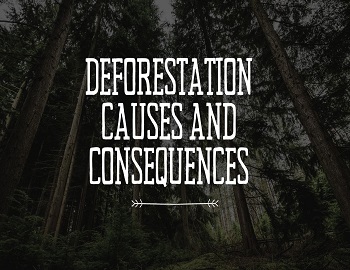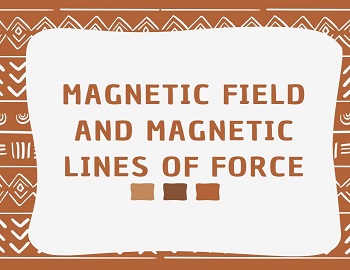Table of Contents
What is Deforestation?
Deforestation means clearing of forests to claim land for use by man. In other words, removal, decrease or deterioration of forested area is called deforestation. It is a serious threat to our economy, quality of life and environment. It is the direct outcome of the increasing demand for croplands for feeding the rapidly growing population, overgrazing, mining activities and urban and industrial development.
Major Causes of Deforestation:
There are various reasons for deforestation as follows-
- Early Civilization- Early civilization was based on large herds of cattle (pastoralization), agriculture and extensive use of timber. Firewood was the only source of energy. Therefore, forests were extensively exploited and denuded.
- Grazing food needs- To meet the demands of a rapidly growing population (urbanization), agricultural lands, industrialization, and settlements responsible for deforestation.
- Forest Fires- Fire is the worst enemy of the forests. It destroys the full-grown trees, young trees of future forests, seeds and even humans. Animal life is also lost and there is a danger to human life too in a forest fire. These may be natural or man-made and cause huge forest loss.
- Shifting Cultivation (Jhuming)- It is a slash and burn practice of tribals for clearing an area to obtain land for cultivation which is rich in minerals due to ash of the burnt vegetation. Cultivation is carried out for 2-3 years. The area is then abandoned. The abandoned area becomes a centre for invasion by weeds, soil erosion and other defects of deforestation.
- Raw Materials for Industrial Use- Wood for making boxes, furniture, railway sleepers, match-boxes, plywood, pulp for paper industry etc. have exerted tremendous pressure on forests. Plywood is in great demand for packing Tea for the Tea industry of Assam while fir tree wood is exploited greatly for packing apples in J&K.
- Development Projects- Massive destruction of forests occur for various development projects like hydroelectric projects, big dams, mining, road construction etc.
- Pests- Many kinds of insects are forest pests. They destroy trees by eating up leaves, boring into shoots and spreading diseases. It is difficult to spray on extensive forest, but biological control is possible.
- Overgrazing- The poor in the tropics mainly rely on wood as a source of fuel leading to loss of tree cover and the cleared lands are turned into grazing lands. Overgrazing by the cattle leads to further degradation of these lands.
- Canals- Canals passing through forests areas kill many trees due to seepage of water.
- Weather- Floods, earthquakes and landslides damage the forests.
Major Consequences of Deforestation:
The problem of deforestation has brought many hazards as follows-
- Deforestation has an impact on the productivity of croplands.
- Problems of soil erosion and loss of soil fertility increases and soil actually gets washed leading to an accentuated cycle of floods and droughts.
- Percolation and groundwater recharge has decreased.
- Consumption of CO2 and production of O2 are getting adversely affected. More carbon is added to the atmosphere and global warming is enhanced.
- The hydrological cycle gets affected thereby influencing rainfall. The summers become hotter and the winters colder. Dust storms become common.
- Forest-dwelling species are becoming extinct, causing a loss of irreplaceable genetic resources.
- Deforestation causes habitat destruction and loss of wildlife.
- Biodiversity and ecosystem is lost and along with that genetic diversity is eroded.









Comments (No)